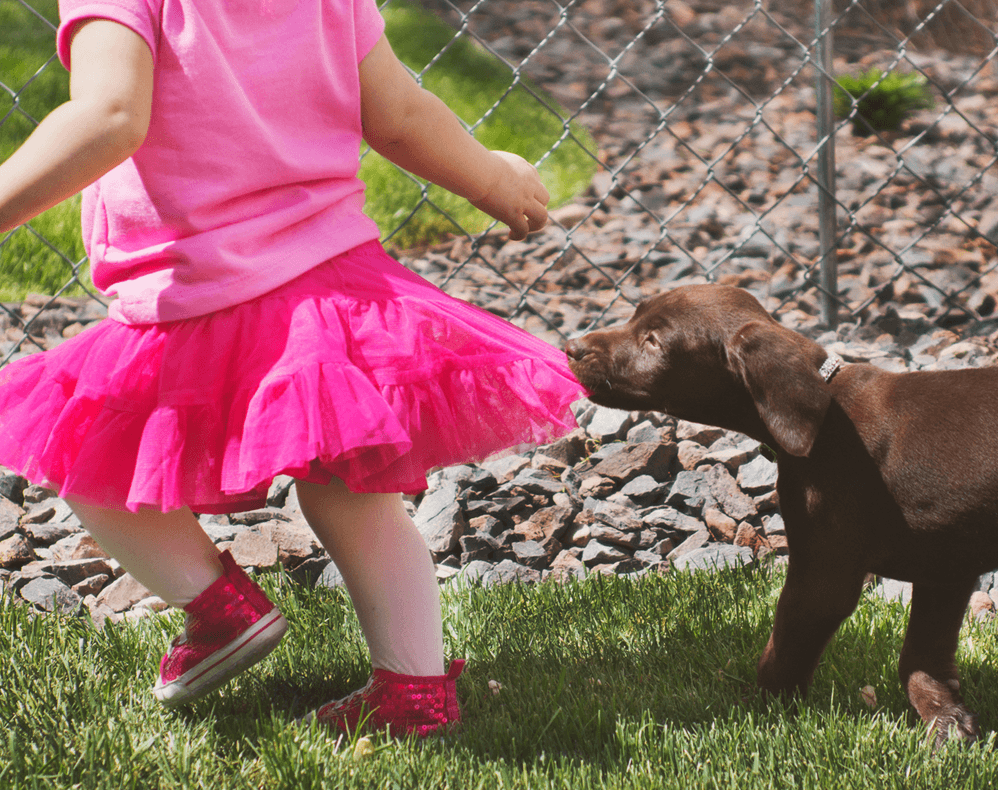I have two kids. One is an 8th grader who loves jewelry-making, track and field, and a good book. The other is a two-year-old Australian shepherd who lives for flying discs, belly-rubs, and fresh berries. Except for a few extra legs and some fur, there's little difference in my mind between the two. Both deserve the best.
That puts me in the school that thinks that if you're not willing to see your dog as an equal member of your family (albeit one stuck at age three!), you should ask yourself if having one is the right choice for you. Because dogs' complex emotional lives and physical needs demand the same respect we afford our human pack members. Yes, they're different from us in many ways, aliens from Planet Dog who've landed their lovable spirits in our midst, but when it comes to what matters—the ability to love, feel pain, know sorrow, find joy—dogs are more like us than many dare to admit.
Yet too often they lead second-class lives, and that's if they're lucky. The good news is that it's easy to provide our dogs with the same healthy lifestyle everybody else in the family enjoys. Here's how to practice some serious puppy love:
Reconsider diet. Entire books have been written about the issues with commercial pet foods, and "dead," overprocessed foods made from dubious ingredients(1) have been blamed for for everything from skin problems to cancers.(2) Yet healthy homemade diets based on fresh, human-grade meats and produce are surprisingly easy to serve. Research recipes and work with your veterinarian to find the right one for your dog.
But first you'll have to find a good vet. Rather than pick yours from a phonebook, seek one who's aligned with your values and philosophies as the parent of a pup, and screen like you'd screen for the perfect pediatrician. Many dog lovers opt for a holistic practice that mixes conventional care with alternative therapies like herbal medicine and acupuncture.
When it comes to toys, don't play around. There are no government standards for toxic chemicals in pet products,(3) and many contain questionable synthetic materials, choking hazards, dyes, preservatives, lead, arsenic, mercury,(4) bacteria, and other unhealthy things.(5) Tests of pet products conducted by the Ecology Center found that 45% of 400 products tested had detectable levels of at least one hazardous substance.(6) Look for toys made from natural and/or organic materials that declare themselves free of things like BPA and phthalates. Some vets recommend raw beef stew bones for gnawing.(7) Whatever you pick, always monitor your dog when he or she is chewing or playing.
Flea and tick solutions are another thing that can bug your dog's health as many rely on toxic pesticidal chemicals.(8) The NRDC offers guide to the dangers in pest control products and advice for safer strategies.
Always give your dog its own safe and comfortable place to sleep, one with lots of padding to protect joints and insulate from cold floors. Believe it or not, dogs have different "sleeping styles." This guide will help you identify a better bed for yours. Here is another guide on tick and flea removal. (10)
Unleash a safer walking arrangement. Traditional leash-and-collar systems can damage your dog's neck region, especially if your pup pulls a lot when you're out and about. Choke and prong collars are particularly odious. A much safer bet is a harness with an attachment at the shoulders or chest. (Chest attachments make it easier to control errant pooches.)
Don't overwash. While different breeds have different bathing needs, baths strip away vital oils that keep fur and skin healthy, and should be used sparingly. Don't use people shampoos—their pH is significantly different.(9) Look instead for natural formula dog shampoos that rely on a minimum of synthetic ingredients.
Since a dog considers it reasonable to eat just about anything, watch what plants you keep around the house and yard. This guide will show you which to avoid. Whatever you grow don't use pesticides! Dogs live close to the ground and have substantially increased exposures to any you apply.
Finally, remember that your dog is a person, too. Just like your human kids they need love and attention to thrive. Make sure you spend time each day tending to their physical and emotional needs from walks and playtime to snuggling and grooming. You'll benefit, too—studies show that time spent with our pets provides a variety of surprising health benefits that, just like your dog, you won't want to live without!
(1)Food Pets Die For, Ann N. Martin, New Sage Press, Excerpted at http://www.homevet.com/index.php/diet-discussion/item/315-an-excerpt-from-the-book-food-pets-die-for
(2) Dr. Pitcairn's Complete Guide to Natural Health for Dogs and Cats, by Richard H. Pitcairn, Rodale Press, 2005, Pages 9-28
(3) http://www.healthystuff.org/findings.091609.stuff.php
(4) Ibid.
(5) http://pets.webmd.com/dogs/rawhide-good-or-bad-for-your-dog
(6) http://www.healthystuff.org/findings.091609.stuff.php
(7) Dr. Pitcairn's Complete Guide to Natural Health for Dogs and Cats, by Richard H. Pitcairn, Rodale Press, 2005, page 45
(8) http://www.greenpaws.org/report.php
(9) http://www.petmd.com/dog/grooming/evr_dg_shampoo_for_dogs#.T4MSK46Hc3A
(10) https://www.homeoanimal.com/blogs/blog-pet-health/tick-flea-natural-repellent


